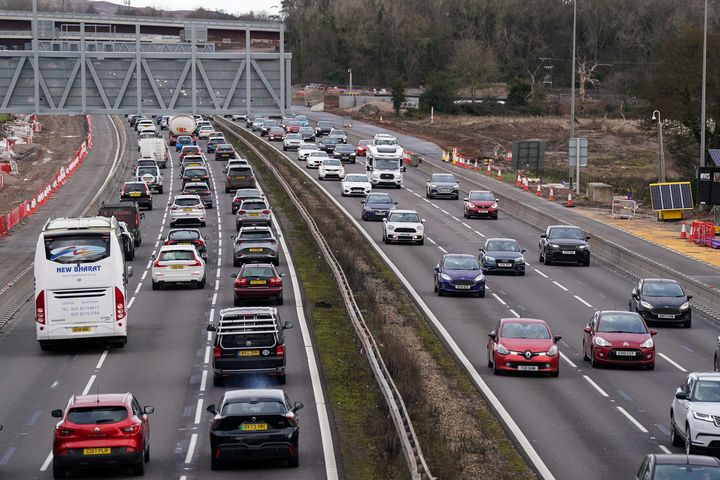
Gov. Jay Inslee recently released an executive order that reemphasizes his administration's support for the state's salmon recovery efforts as his term enters its final days. The move comes as regional salmon recovery projects continue to build momentum with support from the Biden administration, but also amid political uncertainty as the state approaches the January transition to a second Trump presidency and new governor.
"We need to think of our state and its waters as borrowed rather than inherited. We owe future generations a healthy state," Inslee said in a blog post about the move. "These fish and these waters are our responsibility to defend.

We've charted a course for salmon recovery, and this order holds us to it." Environmental groups including Save Our Wild Salmon, Earthjustice and the Columbia Snake River Campaign celebrated the order. "Columbia Basin salmon are running out of time, and we are grateful to Gov.
Inslee for his visionary leadership to ensure these fish will survive for future generations," said Abby Tinsley of the National Wildlife Federation in Earthjustice's statement. The order instructed staff at state agencies involved in salmon recovery efforts to continue habitat restoration work, finish funded studies about mitigating the impacts of lower Snake River dam removal and more than a dozen other items. It also affirmed Washington's support for the assortment of salmon recovery plans and agreements that have come in the past few years, and convened twice yearly meetings focusing on how the state can make sure it's on track with those goals next year during incoming Gov.
-elect Bob Ferguson's term. Inslee funded the studies in 2023 and 2024 following a report he and Sen. Patty Murray, D-Wash.
, released, which said the dams are the largest obstacle for endangered Snake River salmon runs, blocking the fish from spawning grounds and reshaping the river in favor of their predators. The four dams generate about 5 percent of the region's energy supply. They also allow grain barges to navigate to Lewiston, Idaho, and move 60 percent of Washington's roughly $750 million yearly wheat exports.
The studies include: The studies are part of the federal agencies' ongoing salmon recovery responsibility stemming from the December 2023 Resilient Columbia Basin Agreement brokered by the Biden administration. The agreement paused a decadeslong legal battle about dam removal undertaken by Native nations, environmental groups and fishing advocates. Inslee's order expressed support for that agreement, another one that reintroduces salmon to the upper Columbia River Basin and for the Columbia Basin Restoration Initiative.
That last agreement is between Oregon, Washington and four Native nations — Confederated Tribes and Bands of the Yakama Nation, Confederated Tribes of the Umatilla Indian Reservation, Confederated Tribes of the Warm Springs Reservation and the Nez Perce Tribe. It informed the Biden administration's agreement but went further, drawing criticism from Republicans for calling for lower Snake River dam removal. The issue is contentious, with proponents of each perspective citing federal studies that either say dam removal is necessary for salmon recovery or that it's not.
The Northwest Power and Conservation Council — which is partly responsible for salmon recovery through its Columbia River Basin Fish and Wildlife Program — recently announced salmon populations over the past decade are higher than in the 1990s, and only a little lower than the decade ending in 2013. The council's numbers, however, do not differentiate between wild and hatchery fish. Runs of wild fish have consistently and significantly declined for decades.
A 2023 study found four decades of taxpayer-funded conservation spending — totaling about $9 billion — had failed to grow stocks of wild salmon and steelhead in the Columbia Basin. Lower Snake River dam removal — which many environmental groups, government reports and studies call salmon's best chance at continued survival — would require congressional approval. That's an unlikely prospect given Republicans, who have long opposed it, will control both Congress and the presidency in a matter of weeks.
Ferguson did not respond to questions about his stance on removal or what direction his administration will take on salmon recovery. He previously came under fire as attorney general for fighting Washington tribes' ultimately successful effort to get the state to rebuild culverts that were blocking salmon from their spawning grounds. More recently, he expressed support for some policies supporting salmon recovery in a September interview with Northwest Sportsman Magazine.
Whatever his priorities, he will face tough choices with a $10 billion budget shortfall — about 14 percent of Washington's total 2023 spending — looming over the state. The Murrow News Fellowship is a state-funded journalism project managed by Washington State University. Local partners are The Daily News and The Columbian.
For more information, visit news-fellowship.murrow.wsu.
edu ..











